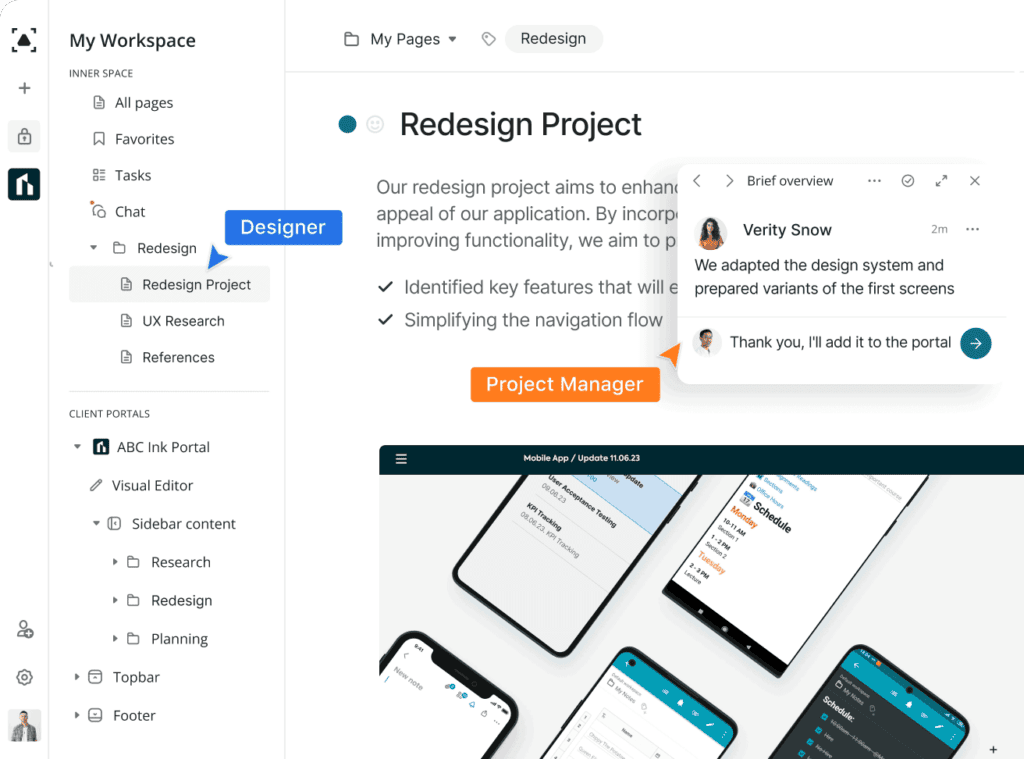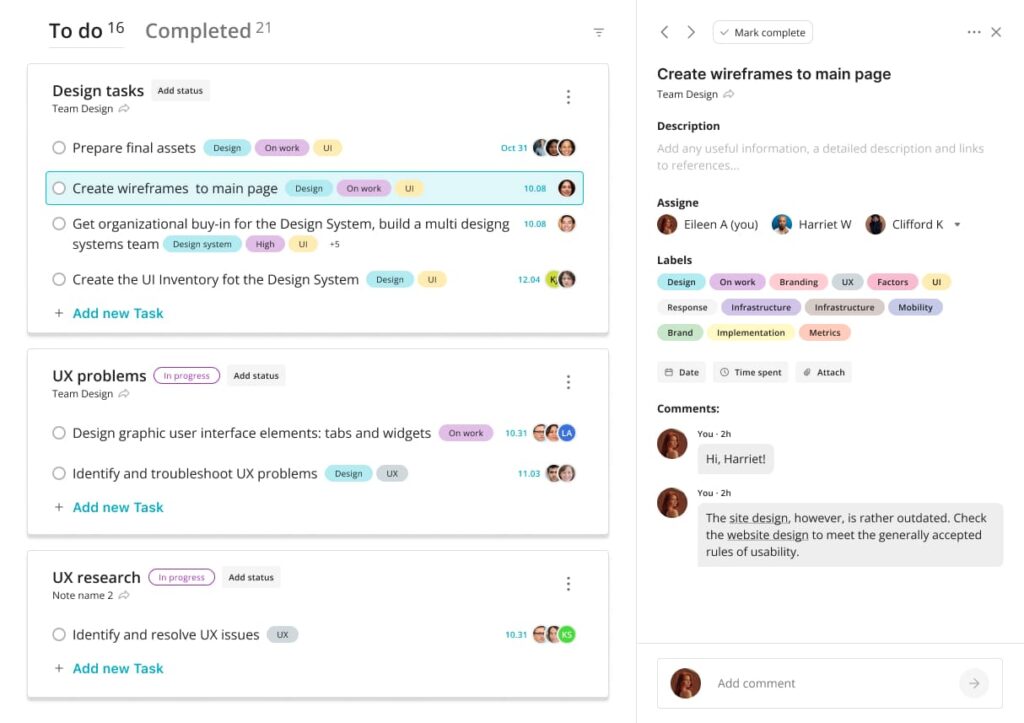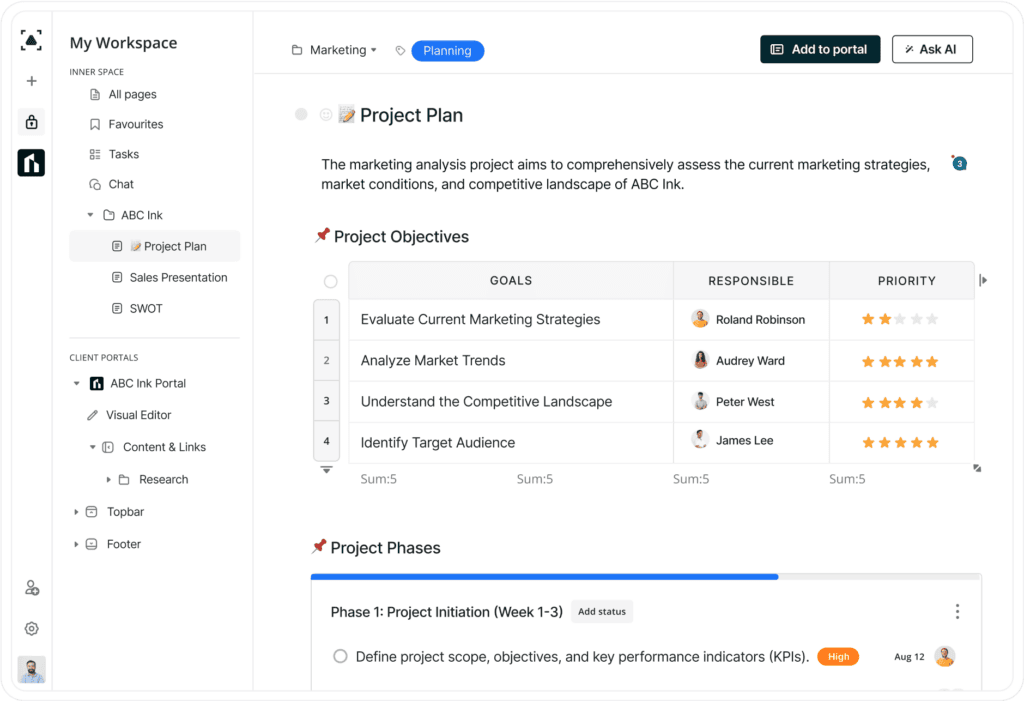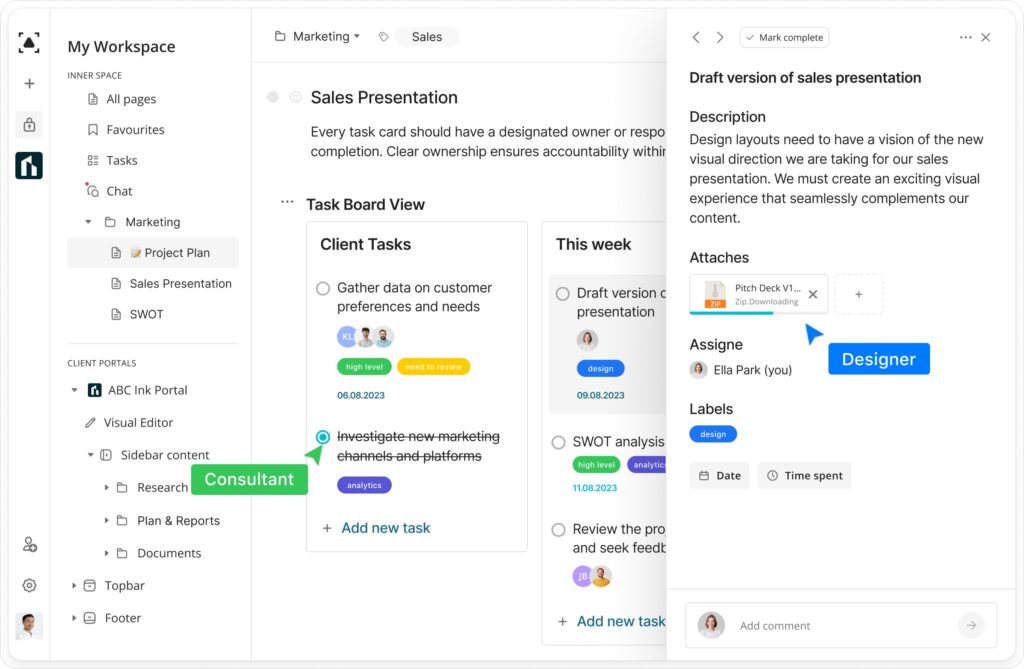
Why Asynchronous Work is the New Way of Doing Things
- April 1, 2024
- 12 Min read
We live in a world where we expect everything to happen instantly. In reality, most of our work is asynchronous. It takes time to write copy, create content, or even think.
To succeed in the future, we must learn how to adapt to the new way of working. We must embrace asynchronous work as the new norm.
Asynchronous work has become the new normal because it allows us to focus on important activities while letting the rest wait. This means that we can get more tasks done without spending hours every day waiting around for someone else to finish something.
Nowadays, asynchronous work has become the accepted way of doing things. It means that instead of waiting for someone else to finish their task, you can just jump in and start working while others continue to work.
Why should you bother with asynchronous work? What does it mean for you? How can you make sure that you’re not missing out on anything?
This is why many businesses today manage asynchronous workflows. It’s also why you should too. Read on to discover why asynchronous work is the new way of doing things.
What is Asynchronous Work?

Any task that doesn’t require an immediate response falls under asynchronous work. Instead, it allows someone to complete their tasks at a later time. This type of work is often done online, where workers use tools for communication, productivity, and collaboration.
Asynchronous work, also called async work, is becoming increasingly popular because it frees up employees’ time to perform other types of work. The result is happier employees who can spend more time focusing on their jobs instead of waiting for others to respond.
Since asynchronous work is not time-sensitive, it’s ideal for freelancers, consultants, contractors, and anyone else who works remotely.
Asynchronous work is also useful if you have regular communication with clients located across the globe. They can easily send files via email or upload documents to a shared drive, and you can reply at your leisure.
Since asynchronous work is usually completed online, there’s no need to worry about losing track of what was said during a conversation. You can simply go back and review the conversation whenever you want.
What is the Difference Between Asynchronous and Synchronous Work?
Synchronicity refers to work where everything happens at once. When you’re engaged in synchronous work, you’re constantly interacting with others.
You have to be prepared to answer questions immediately, and you have to be aware of the needs of those around you. This type of synchronous communication has defined many industries over the years, including customer service, sales, marketing, and journalism.
Since you’re always in communication with team members, you might miss out on opportunities to have time for yourself. Synchronous work means tackling tasks at the same time. This includes tasks like writing emails or collaborating on a project.
Sometimes, you might feel you’re not getting much done. You won’t know what’s next, so you might end up spending a lot of time waiting for things to happen.
Asynchronous work means completing tasks independently. For example, you may spend time on a project while checking email, or you might browse the internet while also creating a client proposal.
Async work saves time by allowing you to focus on different parts of a project at the same time. Instead of waiting for one person to finish something, you can move on to another task immediately.
Asynchronous work is the new normal. People are now expected to be flexible and switch between tasks quickly. They’re not supposed to wait until everything is done or rely on communication from others before moving on to the next task.
When you use asynchronous work, you’re being more efficient. You’re getting more done in less time because you usually get into a flow quickly. You’ll also save yourself valuable time.
Benefits of Becoming More Asynchronous
There are many benefits of asynchronous work.
1. Spend more time focusing on important things
This is because you don’t have to waste time waiting for people to complete tasks. You can start other things right away. This means you’re not doing one task at a time. Instead, you’re completing multiple tasks simultaneously.
2. Be more productive
If you’re used to doing all your work in sync, you may find it difficult to adjust to async work. If you’re willing to make some changes, you’ll see you can increase your productivity because you won’t have as many interruptions or stoppages during your workday.
3. Finish projects sooner
Since you’re able to attend to several projects at once when doing async work, you can often complete them faster. This means you can accomplish more when you’re using asynchronous work. Since you’re not limited to only one task at a time, you can focus on multiple projects simultaneously.
4. Improve your workflow

Async workflows allow you to keep track of multiple projects at once. You can check email, write an article, and create a presentation all at the same time. You can also take advantage of the fact that async work allows you to complete multiple tasks at once.
5. Save time
By switching from synchronous to asynchronous work, you can save time. You no longer need to wait for someone to finish their work before you can continue. You can jump straight into the next task when doing asynchronous work.
6. Increase efficiency
Instead of wasting time waiting for other people to finish their tasks, you can jump straight into the next thing. This will allow you to get more done in less time. If you’re willing to change your communication style, you’ll notice that you can be more efficient with async work.
7. Improve your creativity
You can think about what you want to do and think of creative ways to get your tasks done. You’ll have more time to think about your ideas before sharing them. This makes you more creative. When you’re doing async work, you’re not limited to one task at a time like you would be if you were doing synchronous work.
8. Improve your ability to manage multiple tasks
Asynchronous work gives you the option to focus on many tasks. This means you can juggle many projects at once. When you’re doing synchronous work, you’re usually stuck with one project at a time. This limits your ability to multitask. However, by doing async work, you’ll have more flexibility.
9. Reduce stress
When you’re doing synchronous tasks, you may feel stressed out. You may worry about whether you can finish your tasks on time because you’re relying on others to complete their tasks. You may feel anxious about how long something will take, especially if good communication practices aren’t in place. By doing async work, you don’t have to worry about these things because you’re in control and there will be much better communication.
10. Become more organized
When you’re doing asynchronous work, you can organize your tasks better. You can organize your time better since you’re not stuck with one task at a time anymore. Your communication will improve. You can keep track of multiple projects and tasks at once. Async work makes it easier to stay organized.
Challenges of Asynchronous Work
Asynchronous communication is becoming increasingly common in the workplace since async work provides a lot more flexibility. However, there are some downsides to this flexibility.
1. Lack of structure
Since you can focus on multiple projects simultaneously with async work, you may lose sight of which project is the higher priority. This can make it difficult to know when you should start a certain task.
2. Lack of accountability
If you’re doing asynchronous work and you’re not communicating with anyone, then you won’t know if they’re going to meet deadlines. You might end up missing deadlines because you weren’t aware of them.
3. Increased workload
The increased workload associated with async work can lead to burnout. Since you’re juggling so many tasks, you may not have enough time to dedicate to each task. This could cause you to miss deadlines.
4. Difficult to manage your team member’s priorities
With async work, team members have to juggle multiple tasks, set priorities, and meet deadlines. As a leader or manager, you cannot control every aspect of their day. You can help them prioritize their workload, but ultimately, they have to decide when to focus on work and when to take care of themselves.
5. Harder to collaborate
Collaboration is an essential part of any business. With asynchronous work, you’re not waiting for others to complete their tasks for you to complete yours. This works both ways. Others are not waiting for you either. With async work, you don’t have control over the actions of others. This can make collaboration harder.
How to Manage Asynchronous Workflows
Knowing the benefits of asynchronous work, how do you manage asynchronous workflows?
If you want to continue with asynchronous working, here are things to consider.
1. Set clear expectations
Make sure everyone understands what you expect from them. This includes understanding what you expect from yourself and what others expect from you. This means setting clear expectations for your team members. Make sure everyone knows what they need to do and why async work is important.
2. Maintain regular communication
One key to managing asynchronous work is constant communication. Implementing asynchronous team communication is important if you want to succeed with async workflows. Communicate clearly with your team members about what you need from them. Be open and honest in your communication and actions with your team members. Let them know what you’re expecting from them. They’ll appreciate knowing what you need from them and vice versa. When you demonstrate excellent communication, others will automatically improve their communication, too.
3. Have a plan

Planning well is crucial to managing asynchronous work. Without a plan, you won’t know what to do next. Having a plan lets you know what needs to be completed first before moving onto other tasks. It also helps you stay organized and gives you a sense of urgency. Part of planning is also making sure you have adequate documentation for your processes or workflows.
4. Keep track of progress
It’s easy to lose track of progress when you’re doing async work. To avoid this, keep track of your progress by using project management tools. These tools allow you to see who’s working on what and when they should be finished.
5. Check in frequently
Regular check ins are another important step. Checking in lets you know what your team member is up to. It gives you a chance to ask questions and check on their progress. It also allows you to provide feedback, which is essential for managing asynchronous work. When you give feedback, you let your team members know what you think about what they’ve been doing. This helps them improve their performance and makes them feel valued.
Tips for Becoming a More Asynchronous Company
As asynchronous work becomes more popular, knowing how to make it part of your company culture will determine how effective it will be.
Here are some tips to help you become a more asynchronous organization.
1. Understand the benefits
The biggest benefit of being an asynchronous company is that it allows you to focus on the important things. You can accomplish more than ever before. By focusing on the important things, you can increase productivity and efficiency. This has to be the controlling idea in all your communication about async work and why it’s important.
2. Ensure everyone knows what asynchronous means
If people don’t fully understand what async work means and what its benefits are, they will most likely continue doing things and communicating like they have always done. Adopting asynchronous work means adjusting communication practices. If people aren’t aware of these changes, then they may not accept them. Make sure everyone understands what async work means, so they can help you adopt it in your company.
3. Provide training to improve the skills of your employees
Training is one of the best ways to ensure that your employees are able to effectively communicate and collaborate with each other. Training will help them develop the required skills to manage asynchronous work. This can include project management training and communication techniques that are specific to async work.
4. Create a culture of trust
When you create a culture of trust, you will build relationships with your employees. This will lead to better collaboration and communication. People will feel comfortable sharing ideas and opinions. They’ll also feel safe enough to share information and ask questions.
5. Use technology to support your efforts
Technology plays a major role in supporting your efforts to become a more asynchronous company. Technology can help you organize projects, communicate, and manage tasks. The right technology will also help you automate repetitive processes and free up time.
Using FuseBase for Asynchronous Work

Since having the right tools is essential to integrate asynchronous work in your company, FuseBase will make it easier.
With FuseBase, you can:
- Create a knowledge management system to document your processes and workflows.
- Create super documents using FuseBase, where you can add content in multiple formats, including videos, images, text, audio, and file attachments.
- Communicate with team members using private or public chat channels, as well as @-mentions and comments.
- Improve visual communication with Nimbus Capture powered by FuseBase, where you can record your screen, take screenshots, or clip webpages to share ideas or ask for feedback.
- Improve team collaboration using the task management features.
Organize asynchronous work for your team with FuseBase
In conclusion, if you want to become a successful company that stays viable and profitable, consider adopting asynchronous work. It’s the new way of doing things.
If you found this article helpful, please share it so others can benefit.
Check our Facebook page for the latest articles & updates!
Found it useful? Share the article with your community
Subscribe to our blog!
Get weekly tips and insights on how to grow your business